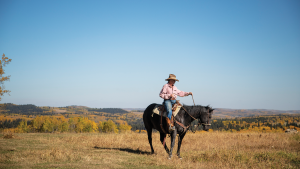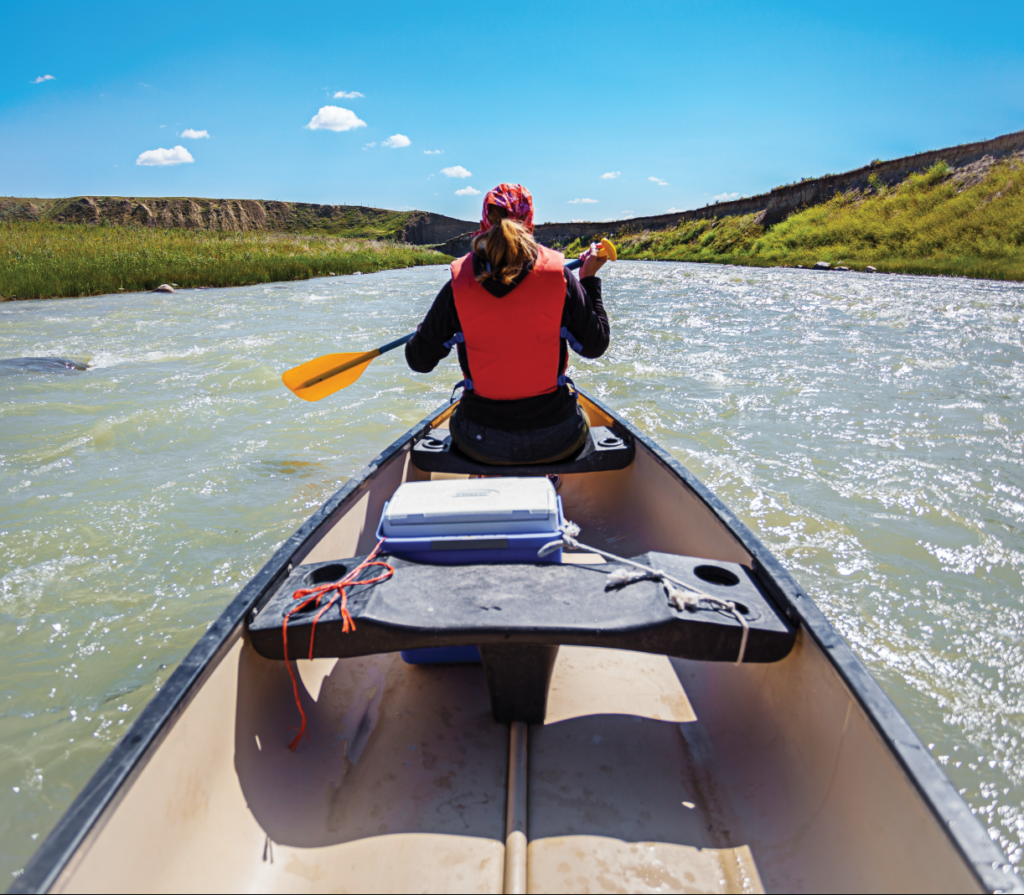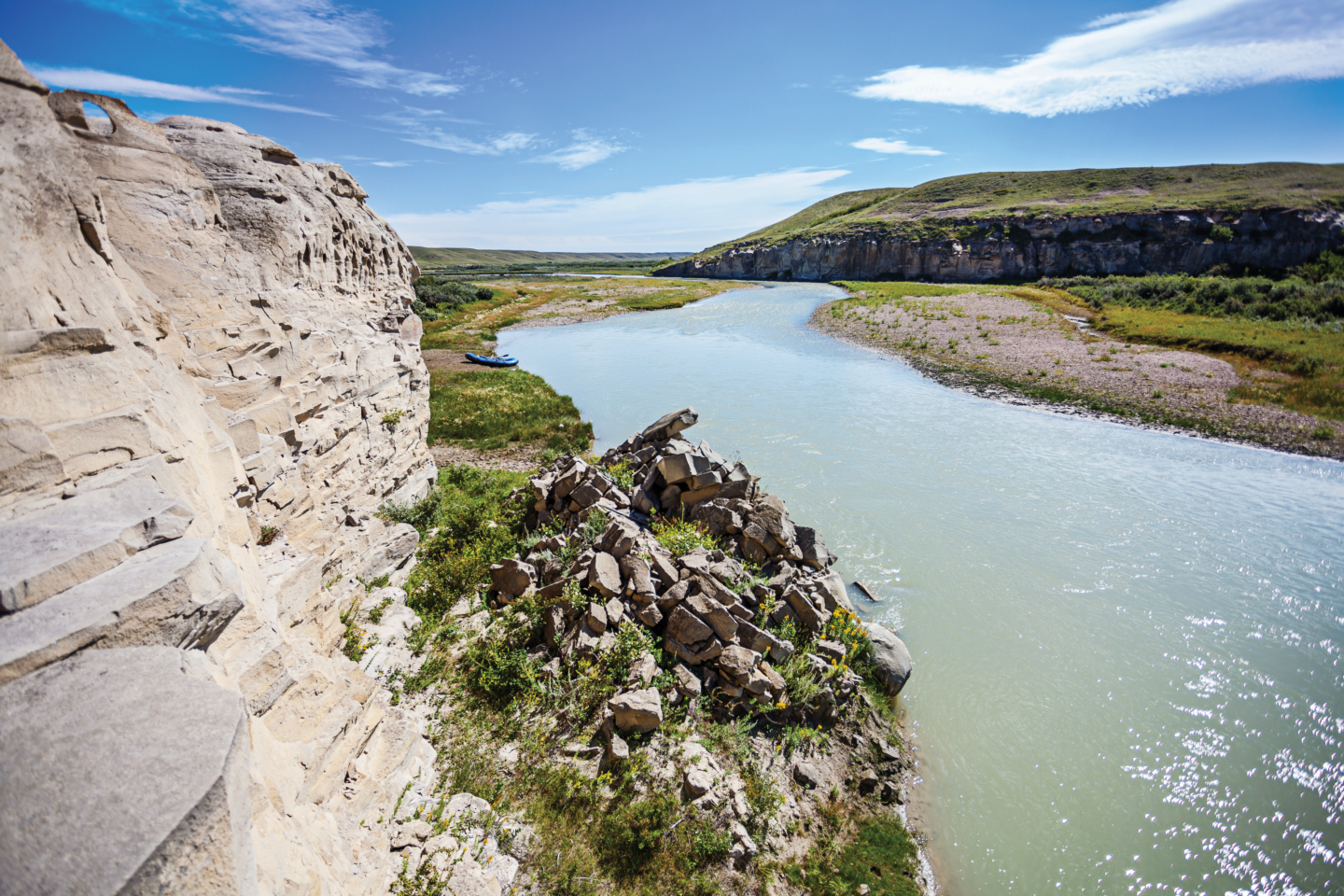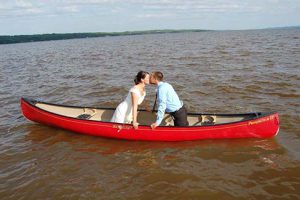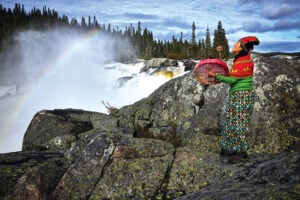Fortunately, our boat doesn’t end up on the bottom of the river. Around us, there’s the famous mix of cliffs and grassy knolls that turn into hoodoos and coulees downstream. It makes an ideal environment for the sage grouse, rattlesnake and northern leopard frog, all creatures under threat. In fact, the area has the highest density of species at risk in Alberta. In spring and summer, migratory birds such as burrowing owls and ferruginous hawks also use the unique habitat. In our time on the river, we see our fair share of wildlife. Cliff swallows, their nests lining the layers of sandstone, constantly fly overhead, and hawks hover in the distance. The odd merganser duck scuttles across the water. Domestic cattle also wander into the river, watching us as we paddle by.
Within a few hours, after navigating the twists and turns of the channel, we arrive at Coffin Bridge. By August, the water is often too low to canoe all the way from Milk River to Writing-on-Stone. Brown meets us, stashing our canoe and replacing it with an inflatable raft that will better navigate the rougher rapids and exposed rock. A former teacher, Brown takes the oars and we get a front-row, guided tour. A longtime resident here, the 69 year old still remembers building rickety rafts on the Kootenay River, near where he grew up in British Columbia, and only making it around a couple of river bends before shattering to pieces. Now, through Milk River Raft Tours, he rents canoes to paddlers and guides others on much sturdier rafts.
The river, he says, is busy in mid-June and early July when the water is flowing fast and high. Yet, no two years are the same. The river constantly shifts its channel, eroding sediment from the steep cliffs and depositing it on sandbars. Sometimes, large floods cover the valley bottom, creating what’s called an alluvial flat. Trees, shrubs and grass grow in the rich mud, providing habitat for the wildlife. “This is a changing river,” he says. “It’s always interesting to come down the first or second time and see where it’s going to go.”
Our first day ends a few hours before sunset at Poverty Rock. We pitch our tents close to a wooden shelter, prepare easy-fix dinners and peppermint tea on propane camp stoves and then spend the breezy evening exploring the area’s hiking paths before going to sleep.
It’s raining by morning, but the clouds soon lift for the next leg of rafting. As Brown paddles past 15- to 20-metre cliffs, he points out exposed fragments of bison bones from the year’s erosion. “It’s littered in this whole bank,” he says, asking us not to reveal the exact location because he worries about treasure hunters.
Brown’s local knowledge and high regard for the river, which runs through some private land, gives us some behind-the-scenes stops. Pulling the raft up to the bank, not far from Poverty Rock, we get our first look at the First Nations’ rock art — believed to depict everything from daily life to sacred ceremonies. The petroglyphs, which are carvings drawn with antlers, bones or other tools, look a lot like stick people, but they tell intricate stories about battles and hunts, or dreams and visions. Unfortunately, there’s also vandalism: visible marks from a saw reveal some of the failed efforts to remove the historic panels.
We linger for a few minutes before continuing up the trail, jumping slightly when we hear the distinctive sound of a rattlesnake. One slithers under a rock; another coils up in a low shrub, giving us a glimpse before raising its tail to provide its warning and we retreat back down the trail. Back on the water, we float down the river for another 15 or 20 minutes before stopping at the first major hoodoo along our journey. It’s an odd-looking sandstone rock, resembling a large mushroom in shape.
